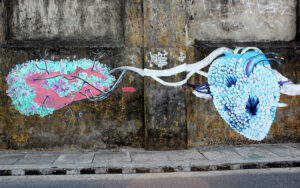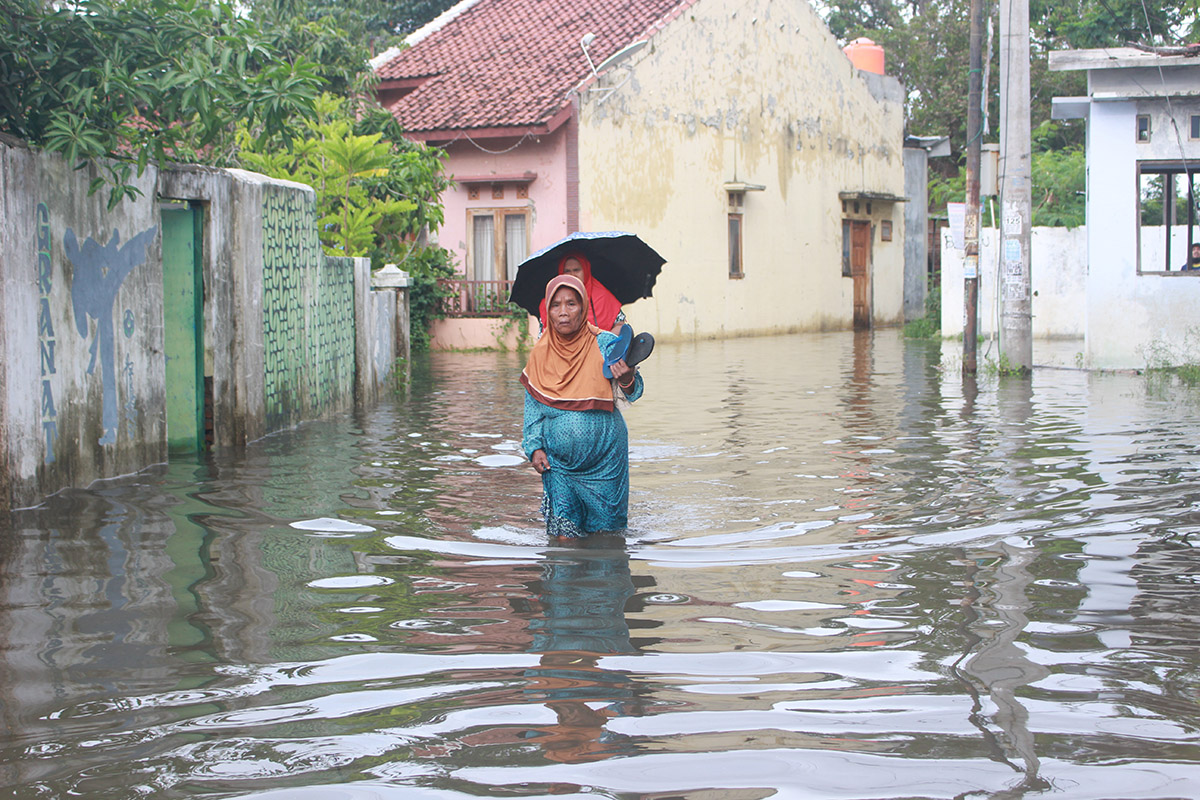“Art can breathe life into a community”
December 29 The power of art to rejuvenate communities is something Sushma.R.Vishwakarma, 24, a correspondent from Bangalore, India has read about, but a visit to the port city of Kochi in India, she writes, has given her a whole new appreciation for the power of art.
The power of art to rejuvenate communities is something Sushma.R.Vishwakarma, 24, a correspondent from Bangalore, India has read about, but a visit to the port city of Kochi in India, she writes, has given her a whole new appreciation for the power of art.
As an architecture student pursuing my urban design semester, I was eager to explore the radical economic change that Biennale – an art festival, has brought to the port city of Kochi in India. After pouring over the history of the place, my friends and I landed in Kochi after a 12 hour journey by train from Bangalore.
A typical coastal area with respect to humidity and its heavy reliance on water as a mode of transportation, we also immediately noticed the café culture, the wide array of cuisine, and how accommodating the place was.
There is an aphorism that states that , ‘a city is an organism that adapts to every change you throw at it’- And Kochi is a true testament to that. Since the 1600’s Kochi has been a port city and a leading bazaar (export point) for the Indian spices. Part of the Indian peninsula, Kochi has provided connectivity to all parts of ancient trade routes, and has been colonized by various invaders throughout history. Today it stands as a quaint port city with colourful communal fabric intertwined in its social structure. It is one of the only cities in India where you can find sari clad Jews visiting a synagogue that was built in 17 century. Kochi also boasts modern Air BnB inn’s, mixed-use spaces like a café which is transformed into an art workshop class in the afternoon. You can see the metamorphosis these places have been through and it’s truly mesmerizing both in terms of architectural value and the sheer colour spectrum of the place.
During our s urvey of the locals, we met Safna, a resident of Kochi who was our age and with whom we instantly bonded as we discussed social media and food. She volunteered to guide us around the place and gave us a new perspective on what each of these place was before the advent of Biennale, and how its thriving now.She explained how various parts of the port, once dilapidated were now fully functional due to the artwork installed there. It’s almost like any worn out building was chosen as an empty canvas by the artist, renewing the structure and breathing new life into it.
urvey of the locals, we met Safna, a resident of Kochi who was our age and with whom we instantly bonded as we discussed social media and food. She volunteered to guide us around the place and gave us a new perspective on what each of these place was before the advent of Biennale, and how its thriving now.She explained how various parts of the port, once dilapidated were now fully functional due to the artwork installed there. It’s almost like any worn out building was chosen as an empty canvas by the artist, renewing the structure and breathing new life into it.
The changes to these spaces were not just in terms of visual appeal but they were economical too. The courtyards were converted to functional spaces like libraries or café thus creating social and economic value for the community.The entire service sector of Kochi – from the local tour guides who speak impeccable French to the fish mart which sells fish along with multi lingual manuals – are completely driven by the Biennale Art Festival. It looked almost like art was being used as a medium to bring the community together to rebuild itself.
As design students, we hear a lot about how art can manifest and lead to economic progress, exciting examples are cited from renaissance Europe to Venice but it has always seemed somewhat farfetched until we witnessed it for ourselves, first-hand. Even to this day, as I pack my bags yet again to visit Kochi for another Biennale, I have a faint smile on my face that reveals my quiet rejoicing over the subliminal power of art.
Photo Credit :Kandukuru Nagarjun via Flickr (license)
About me:
I’m an architect and an artist housed inside an extremely energetic individual. I love working for a social cause and I’m a volunteer at Teach for India. I strive towards local community building in causes for education for all. I truly believe art can transform society and as winnie the pooh said ”THINK, THINK ,THINK!!”
…………………………………………………………………………………………………………………………………………………………………………
Opinions expressed in this article are those of the author and do not necessarily represent the views of the Commonwealth Youth Programme. Articles are published in a spirit of dialogue, respect and understanding. If you disagree, why not submit a response?
To learn more about becoming a Commonwealth Correspondent please visit: http://www.yourcommonwealth.org/submit-articles/
…………………………………………………………………………………………………………………………………………………………………………




